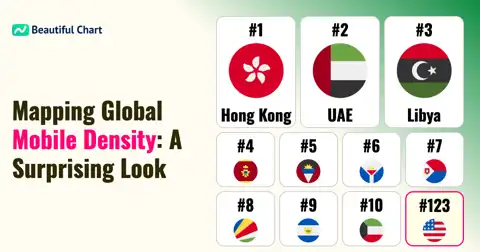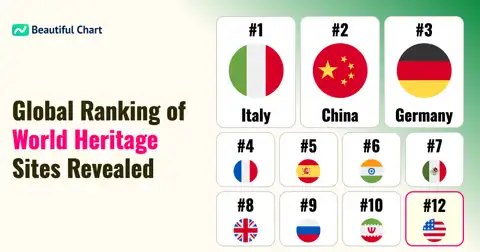The chart showcases the gross national savings as a percentage of GDP for various countries in 2024. Qatar leads the list with a savings rate of 57.98%, followed by Kuwait at 51.55%, and Suriname at 49.99%. These savings rates reflect the economic structure and financial policies of these nations, particularly those with significant resource-driven economies.
Gross national savings refers to the total savings of a nation, including savings by households, businesses, and the government, expressed as a percentage of the country's GDP. It represents the portion of income not spent on consumption and is critical for funding investments and achieving long-term economic growth.
Gross national savings as a percentage of GDP is a crucial indicator of a nation's financial health and its capacity for future investments. In 2024, Qatar emerged as the leading nation with a remarkable savings rate of 57.98%, largely attributed to its substantial revenues from natural gas exports. Kuwait and Suriname follow closely with 51.55% and 49.99%, respectively. Both countries benefit from resource-driven economies, enabling them to save a significant portion of their GDP.
Notably, China, ranked fifth with a savings rate of 43.81%, demonstrates the impact of high savings culture among its population and government policies that prioritize investments in infrastructure and economic development. Conversely, developed nations like the United States and the United Kingdom, with savings rates of 16.91% and 14.23% respectively, exhibit lower savings percentages. This disparity is partly due to differences in income distribution, consumption patterns, and reliance on external borrowing for growth.
The chart also highlights smaller economies like Guyana and Suriname, where natural resource booms have propelled their savings rates. Additionally, countries like Singapore (39.71%) and Norway (44.12%) reflect their strategic use of sovereign wealth funds and prudent fiscal management.
This data underscores how savings rates are shaped by a mix of natural resources, economic policies, and cultural factors. It also provides a lens to assess the sustainability of economic growth and preparedness for future financial challenges.
| Rank | Name | Indicator | Subindicator |
|---|---|---|---|
1 | 57.98% | GDP: $ 244B 686M | |
2 | 51.55% | GDP: $ 160B 397M | |
3 | 49.99% | GDP: $ 4B 337M | |
4 | 44.12% | GDP: $ 526B 951M | |
5 | 43.81% | GDP: $ 18T 532B | |
6 | 41.11% | GDP: $ 464B 181M | |
7 | 39.93% | GDP: $ 21B 178M | |
8 | 39.71% | GDP: $ 525B 227M | |
9 | 38.96% | GDP: $ 802B 958M | |
10 | 38.74% | GDP: $ 266B 779M | |
11 | 37.54% | GDP: $ 97B 956M | |
12 | 36.73% | GDP: $ 10B 628M | |
13 | 36.11% | GDP: $ 564B 20M | |
14 | 36.01% | GDP: $ 21B 13M | |
15 | 35.73% | GDP: $ 29B 872M | |
16 | 35.69% | GDP: $ 46B 790M | |
17 | 35.42% | GDP: $ 44B 179M | |
18 | 34.67% | GDP: $ 527B 796M | |
19 | 34.38% | GDP: $ 465B 814M | |
20 | 34.27% | GDP: $ 79B 605M |





